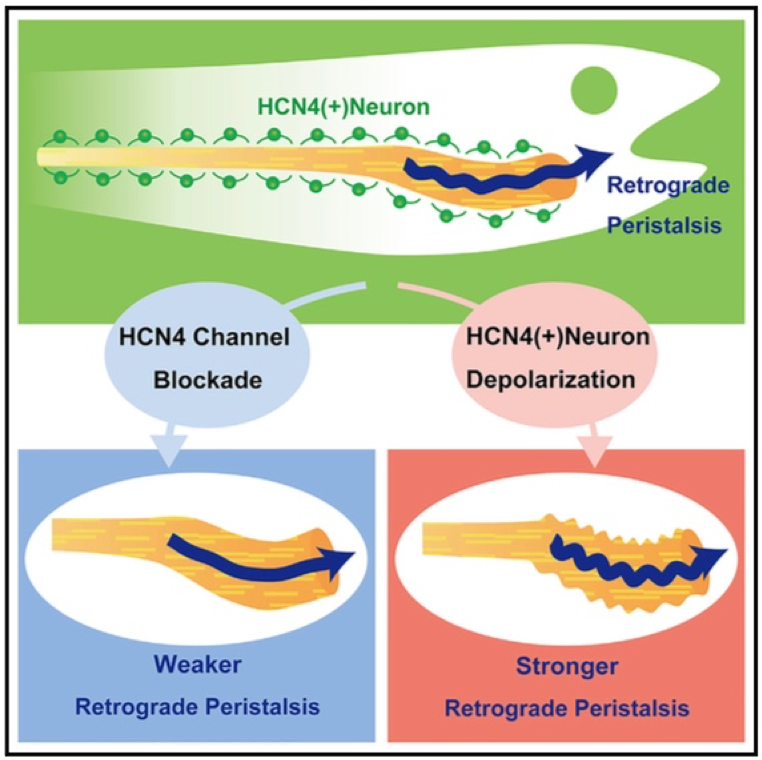Gastrointestinal Neurons Expressing HCN4 Regulate Retrograde Peristalsis
Gastrointestinal Neurons Expressing HCN4 Regulate Retrograde Peristalsis
Kensuke Fujii, Koichi Nakajo, Yoshihiro Egashira, Yasuhiro Yamamoto, Kazuya Kitada, Kohei Taniguchi, Masaru Kawai, Hideki Tomiyama, Koichi Kawakami, Kazuhisa Uchiyama, and Fumihito Ono
Cell Reports 30(9), 2879-2888 (2020). DOI:10.1016/j.celrep.2020.02.024
Peristalsis is indispensable for physiological function of the gut. The enteric nervous system (ENS) plays an important role in regulating peristalsis. While the neu- ral network regulating anterograde peristalsis, which migrates from the oral end to the anal end, is charac- terized to some extent, retrograde peristalsis re- mains unresolved with regards to its neural regula- tion. Using forward genetics in zebrafish, we reveal that a population of neurons expressing a hyperpo- larization-activated nucleotide-gated channel HCN4 specifically regulates retrograde peristalsis. When HCN4 channels are blocked by an HCN channel inhibitor or morpholinos blocking the protein ex- pression, retrograde peristalsis is specifically attenu- ated. Conversely, when HCN4(+) neurons expressing channelrhodopsin are activated by illumination, retrograde peristalsis is enhanced while anterograde peristalsis remains unchanged. We propose that HCN4(+) neurons in the ENS forward activating sig- nals toward the oral end and simultaneously stimu- late local circuits regulating the circular muscle.

Figure1: Gastrointestinal neurons expressing a hyperpolarization-activated nucleotide- gated channel HCN4 regulate retrograde peristalsis, which migrates from the anal end to the oral end of the gut.

Figure2: Visualization of neurons (red) and HCN4-expressing neurons (green) in the zebrafish intestine.















